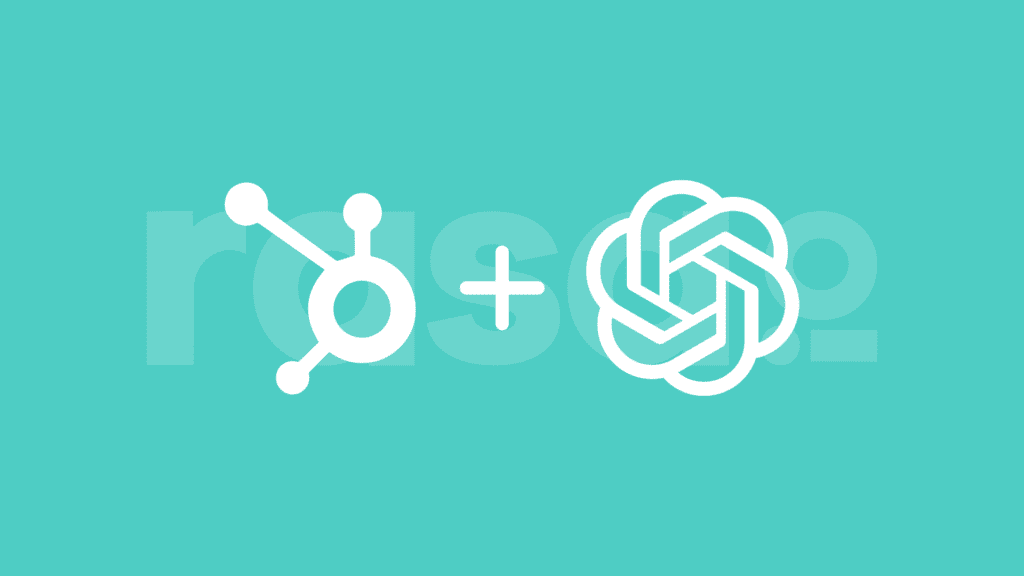Email marketing has come a long way. It’s no longer about mass blasts and crossed fingers. Now, marketers have various tools to create campaigns that connect with their target audience. The potential for success is significant, given that email marketing consistently delivers a higher return on investment than other marketing methods.
But what’s the workaround? Surely, AI can come in handy.
But how?
Businesses can leverage AI to deliver highly personalized and relevant experiences to their customers. A majority—44% of marketing teams—use generative AI to create email copy. If AI is leveraged for personalization, they can tailor subject lines that are 26% more likely to be opened.
Similarly, the sales teams that exceed their performance are 2.8 times more likely to have experienced a significant increase in personalization focus over the past year and a half than underperforming teams.
This happens because AI-powered algorithms for email marketing can help gather and analyze vast amounts of data about customers. And this data is not just about basic demographics but includes profound insights into behaviors, preferences, and needs.
For instance, a recent study by Clevertap found that businesses using AI for customer intelligence saw a 30.5% increase in conversion rate.
As AI evolves and businesses leverage customer intelligence, we’d want you to include it to drive personalized interactions, predict customer behavior, and deliver seamless experiences across all touchpoints.
Let’s explore how your business can leverage customer intelligence with AI for email marketing.
How Does AI Help Get Deeper Customer Insights?
AI boasts the capacity to process large amounts of data swiftly. This means you can uncover patterns and trends that human analysis would miss on a given day.
With this capability of AI, you gain deeper insights into customer behavior on a granular level. A typical analysis could be:
- Identifying key decision-makers within client organizations by leveraging AI to analyze communication patterns, purchase histories, and engagement metrics.
- Predicting churn risk wherein AI analyzes usage patterns, support interactions, and feedback to identify clients at risk of switching to a competitor.
- Exploring upsell and cross-sell opportunities where AI analyzes client behavior and purchasing history to suggest additional products or services that align with their needs.
This depth of knowledge allows for hyper-personalized experiences. It includes tailoring everything from product recommendations for email marketing campaigns to crafting emails with content intelligence for each customer.
Enable your team to gather insights
AI frees marketing teams from tedious tasks by automating data collection and analysis. With AI-powered tools, marketers get quick access to customer insights, allowing them to dedicate their expertise to strategic thinking and campaign refinement.
Such a shift in the workings lets teams transform data into actionable plans by avoiding time-consuming manual processes.
Enrich your customer’s understanding
The crowded market needs a differentiator, and you can use AI correctly to cut through the clutter. With AI-enabled recommendation engines, you can explore opportunities to understand customer preferences. You can thus analyze customer behavior to suggest relevant products or content, improving customer experience through AI in a positive way.
Such a personalized touch not only boosts conversions but also cultivates customer loyalty and engagement.
Develop intelligence with customer data platforms (CDP)
Customer Data Platforms (CDPs) form the backbone of customer intelligence. You can use tools like MemberJunction that collect and reconcile customer data from different sources to create a unified, holistic view of each individual. It’s a powerful platform that forms the base for associations while dealing in data to power a cohesive member experience online.
The result is — a single source of truth that helps you make informed decisions, deliver personalized experiences, and drive meaningful engagement throughout the customer journey.
Get unified and reliable data
CDPs break down data silos, consolidating customer information from various touch points like websites, mobile apps, social media, CRM systems or even from the ERP software. Integrating such data into a repository can provide a comprehensive and reliable view of your customers. It also leads to the elimination of inconsistencies to ensure data accuracy throughout the different touchpoints.
Leveraging such a unified view forms the foundation for personalized marketing campaigns, targeted offers, and tailored customer service interactions.
Hyper-personalize your interactions
With CDPs, you can move beyond generic marketing messages and deliver hyper-personalized experiences at scale. It begins with leveraging customer data to segment your audience based on specific criteria like purchase history, behavioral patterns, response to previous marketing activities, and much more.
With this segmentation aided by AI, you can target messaging and offers that resonate with individual customers, increasing engagement and conversion rates.
Do customer analytics
CDPs’ advanced analytics capabilities enable deeper insights into customer behavior. You can analyze customer data to identify trends, preferences, and pain points and customize products, services, and marketing strategies accordingly.
Such a data-driven approach improves customer satisfaction and drives revenue growth while fostering long-term loyalty.
Implement Customer Intelligence with AI for Email Marketing
The true power of customer intelligence lies in its application. AI-driven email marketing can harness this power to create campaigns that resonate on a personal level. The more you know about the customers, the more you can connect with their innate business issues and optimize every aspect of your email campaigns.
Tip: Simultaneously, implement the best practice to A/B test your email marketing that allows experimenting with different subject lines, content variations, and call-to-action buttons. Such a data-driven approach helps identify the most effective elements, leading to continuous improvement in campaign performance.
You can also use the real-time adjustment capabilities to continuously optimize all campaigns based on performance data, while its inherent learning capabilities ensure that they adapt to customer preferences.
This means adjusting everything from content creation to delivery timing and even the tone of your message to ensure maximum impact and engagement.
Enhance campaign content
Run marketing campaigns that go beyond generic messaging and deliver content that resonates with individual customers on a deeper level. The content can then be based on individual preferences to generate text that adapts to actual customer behavior dynamically or .
For instance, rasa.io AI recommends content to subscribers based on their past interactions with the platform. This includes analyzing subject lines, opens, content read, and engagement with specific topics. By understanding individual preferences and engagement patterns, rasa.io AI tailors email newsletters that deliver highly relevant and personalized content to each subscriber.
Simplify Creating Engaging Personalized Emails!
Use smart technology to save you time curating so you can focus on the “bajillion” other things you need to do.
Optimize open rates
AI doesn’t just improve content; it also ensures that your emails get noticed. By analyzing customer data, AI can determine the optimal send time (discussed later) for each individual, maximizing the chances of your email being opened.
Here’s how:
- Preheader Text Personalization: The preheader text (the snippet of text that appears after the subject line in most email clients) offers a valuable opportunity to grab readers’ attention. AI helps personalize this text with key information or a compelling preview of the email’s content to entice recipients to open it.
- Personalized Subject Lines: Craft subject lines tailored to individual preferences to increase the likelihood of openings. Incorporate elements that resonate with specific recipients to boost the chances of capturing attention and sparking curiosity.
- A/B Testing: AI streamlines the testing process, allowing marketers to experiment with different subject lines, content variations, and call-to-action buttons.
Automate workflows
Email marketing workflows transform into streamlined, intelligent processes by merging customer intelligence with AI. This powerful combination unlocks a range of automation capabilities to boost workflow efficiency and effectiveness.
Such workflow automation leads to —
- Intelligent segmentation by creating highly targeted segments and ensuring that the right message reaches the right audience at the right time. AI analyzes customer data from different sources, including information from a logistics CRM, sales data, and past campaigns, to create highly targeted segments. This sets the base for ensuring the right message reaches the right audience at the right time.
- Personalized email content creation through AI based on individual preferences and behaviors, eliminating the need for generic templates. This results in each email that feels personal and engaging.
- Behavior-driven triggers are based on specific actions or events. For example, a welcome email is triggered when a new subscriber signs up, or a cart abandonment email is triggered if a customer leaves items in their online shopping cart.
- Personalized recommendations since AI analyzes customer data to recommend products or services most likely to resonate with each individual.
- Customer journey mapping through AI maps out the entire customer journey by identifying key touchpoints and opportunities for engagement.
- Leveraging data-driven insights through AI offers valuable insights into campaign performance. It allows marketers to track key metrics and identify areas for improvement.
Optimize send times
AI transforms send-time optimization, turning the guessing game into a data-driven science. By analyzing individual recipient engagement patterns, you can discover when each person will most likely open and interact with your emails.
AI considers different factors like as below to provide the optimized send times—
- Past Behavior: Based on the recipient’s history of email opens, clicks, and conversions, highlighting the days and times when a recipient is most active and receptive to email.
- Real-Time Activity: This includes the recipient’s current location and device usage to obtain more precise timing so that emails are delivered on time during high chances of availability and engagement.
- Machine Learning: Blending with AI algorithms that offer continuous learning and refinements over time.
- A/B Testing for Continuous Optimization: With AI, you get automated A/B testing done to compare different send times and evaluate their effectiveness. Continuously testing and analyzing results help identify the best-performing send times for each individual, maximizing open rates and engagement over time.
Conclusion
Customer intelligence powered by AI stands out as a major asset for email marketing. Data and automation help create unique experiences that resonate with each customer.
Using AI in different situations will ultimately facilitate high engagement, loyalty, and increased revenue. From uncovering hidden knowledge to automating tasks and improving campaigns, AI gives marketers the tools to build efficient and effective email strategies.
As technology advances, the potential for AI in email marketing is vast, offering a promising future for businesses that adopt this powerful tool.

Taher Batterywala is a creative marketer who loves to write & design content that organically drives conversions. He is the creator of Pineable, the world’s first content marketing design inspiration hub. He regularly shares his thoughts about content marketing, SEO and design. As a true cinephile, he admires movies above anything else.











